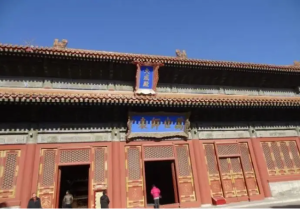Temple of Confucius in Beijing
Beijing Confucius Temple, also known as the “Temple of the Ancestors”, is the place of worship of Confucius in the Yuan, Ming and Qing Dynasties in ancient China. It is located at No. 13 Guozijian Street, Anding Gate, Dongcheng District, Beijing, close to the North moat and not far from the Lama Temple. This ancient temple not only carries a profound historical and cultural heritage, but also attracts many tourists to visit with its unique architectural style and rich collection of cultural relics.
Historical evolution
Beijing Confucius Temple was built in the sixth year of Yuan Dade (1302), after the Ming and Qing dynasties of many repairs and expansion, forming the current scale and layout. A large-scale renovation was carried out in the 32nd year of Guangxu of the Qing Dynasty (1906) and completed in the fifth year of the Republic of China (1916). The architectural style of the Confucian Temple is simple and solemn. Facing south, it enters the courtyard three times. The main building is distributed along the central axis and symmetrical, showing the essence of traditional Chinese architecture.

Main attraction
Master Gate: As the south gate of the Confucian Temple, Master Gate is simple and solemn, and the dougong still maintains the style of the Yuan Dynasty. There is a stone tablet in front of the gate to dismount, with a variety of characters engraved with the clear requirements of “officials are waiting for this dismount”, reflecting the ancient respect for Confucius.
Jinshi inscription tablet: Yuan, Ming and Qing Dynasty Jinshi inscription tablet forest is located in the first Jin Yuan, a total of 198 stone tablets, engraved with 51624 Jinshi’s name, birthplace and ranking. These steles are important documents for the study of the imperial examination system in ancient China.
Dacheng Gate and Dacheng Hall: Dacheng Gate is the gate to enter the second courtyard (Dacheng Hall courtyard), with yellow tile eaves and heavy stone columns. Dacheng Hall is the main building of Confucius Temple, nine wide, five deep, with a platform in front, surrounded by stone guardrail. The temple is dedicated to the throne of Confucius, and has a tall wooden niche and complete sacrificial instruments and Musical Instruments. The regulation of Dacheng Hall is the highest architectural level in China’s feudal society, comparable to the Hall of Supreme Harmony in the Ancient Palace.
Qianlong Stone Drum and Imperial stele Pavilion: Five stone drums are arranged on the left and right sides of Dacheng Gate, engraved after Zhou stone drum in Qianlong period. These stone drums not only have artistic value, but also carry rich historical and cultural information. The imperial tablet Pavilion keeps the praise and sacrifice records of the emperors to Confucius.
Tourist information
Opening hours: The opening hours of the temple are divided into off-season and peak season. Off-season (November to April) 8:30-17:00 (16:30 stop selling tickets); Peak season (May to October) is 8:30-18:00 (ticket sales stop at 17:00). Closed every Monday (except holidays).
Ticket price: Adult ticket price is 30 yuan/person, discount ticket price is 15 yuan/person (for seniors over 60 years old and minors under 18 years old). Children and senior citizens can enjoy 50% discount. It is recommended to book tickets through the official public account in advance.
How to get there: Visitors can take subway Line 2 or Line 5 to Yonghegong Station and walk there; You can also take bus No. 13, No. 84, No. 116, No. 117 and get off at Guozijian Station or Anding Mennei Station and walk there.
Travel advice
Tour route: Visitors are advised to follow the architectural layout of the Confucian Temple